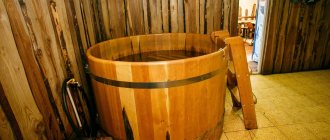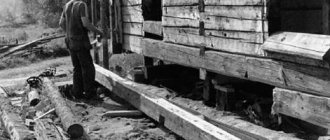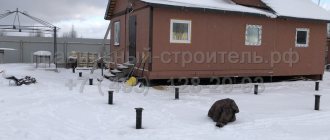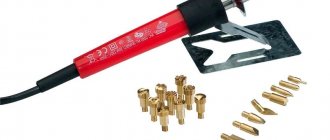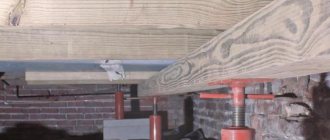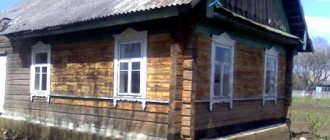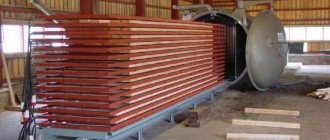How many poems and songs have been written about this tree! In addition to being beautiful, it is valued both as a good honey plant and as an orderly. If you want to create beauty near your home, in your garden plots, take a closer look at late bird cherry. It is especially good during flowering, when fragrant inflorescences appear on the branches.
Previously, the tree grew everywhere, but now the picture on village streets is completely different - you see this amazing tree with a thick spherical crown less and less often. Nowadays they begin to prefer overseas curiosities to bird cherry, they pay a lot of money for them, and then throw them away.
It’s not for nothing that our ancestors respected and loved the bird cherry, brought it from the swamp and forest and planted it under their window. They valued it for its aroma and beauty, fast growth and unpretentiousness (plant a bird cherry cutting in the ground, within a year there will be a bush up to a meter tall), bactericidal properties and good wood.
A bird cherry bush planted in the backyard of the garden or under a window does not require material costs (except a little physical effort) and will adequately decorate the garden. Its thick spherical crown looks noble.
Legends about the origin of bird cherry
One of the most common legends that reveals the secret of the appearance of this tree is related to love. Which is not surprising. The unfortunate girl was abandoned by her betrothed, and her heart became stiff with grief. Since then, people have believed that the time of its flowering is always associated with cold weather. The Mari have an interesting explanation for this: supposedly the tree prays to higher powers, complaining that people who pick fragrant flowering branches for bouquets break its fingers. And the almighty deities send cold weather to give the bird cherry a break. Among the Slavs and other peoples, bird cherry, like birch and oak, was considered a sacred tree. The Gilyaks, one of the northern peoples, equate the destruction of this tree to the murder of a person. And the Vepsians, representatives of the Finno-Ugric people, firmly believe that collecting fruits is strictly prohibited using metal objects - knives or scissors. To avoid harming the tree, this can only be done with your hands. Another beautiful legend explains the appearance of this tender tree as a love story. One guy fell in love with a young, slender, dark-skinned woman with blond hair. And he made the girl’s heart tremble. But the girl also fell into the black heart of the terrible forest sorcerer. He was unable to win the love of the beauty and planned an evil deed: he came to the lovers’ wedding and cursed the groom, turning him into a bumblebee. And the bride prayed, asking omnipotent Nature to return her beloved. Immediately thunder struck, lightning flashed, lead clouds rolled in, thick trees rustled, but... So the guy remained in the form of a bumblebee, and Mother Nature sadly rustled the leaves of the birches that she could not cope with the curse, it was too strong. And the girl in despair begged that she would agree to anything to stay with her beloved. And immediately it turned into an amazingly beautiful tree, strewn with lush white inflorescences. And the bumblebee immediately flew towards him. The people who saw this miracle gave the name to the tree, calling it bird cherry in honor of the brave, loving dark-skinned girl. And the evil sorcerer turned into a stump and quickly crumbled into dust.
Which firewood is better for stoves: pine, birch or alder.
Advantages. Alder firewood is the best. They have long been considered healing. They lit it to not only warm up, but also to enjoy the magical aroma. They say that it was with alder wood that the stoves in the royal and boyar's chambers were heated.
Difficulties. Alder trees that were cut down in swampy areas are often used for firewood. They are completely different: they have a lot of soot, and the heat is not light, but heavy. Such alder firewood cannot in any way be called “royal”.
Folk signs associated with bird cherry blossoms
The tree blooms in May or early June. Flowers collected in oblong inflorescences smell pleasant and attract bees. Bird cherry is an excellent honey plant. This is another reason why they tried to plant them near houses or on personal plots. The tree or shrub is widespread throughout Russia: from the European part to Siberia and the Far East . That is why, along with the birch, it can be considered a symbol of the Central Russian Plain.
Bird cherry in bloom
The most common type is the common bird cherry, also called carpal bird. She throws out clusters of white inflorescences. Of the 20 tree varieties, 7 are cultivated on our territory . Of these, decorative species stand out. Their unusually beautiful inflorescences, from yellowish multi-colored to double pink, are used in landscape design to decorate garden and park compositions and personal plots.
The bird cherry with white flowers is more familiar to us. There is a popular belief that when the bird cherry blossoms, you can start sowing wheat and planting potatoes. There is an opinion that when a tree blooms, the air is freshest and cleanest. Flowering is also associated with temporary cooling, “bird cherry cold.”
But for most people, fragrant flowering symbolizes the renewal of nature and an optimistic spring mood.
Aspen firewood
Advantages. This wood does not smoke, burns with a high flame, but only produces heat in a hot oven. Aspen is valued for its ability to clean the chimney of soot and soot. Poplar firewood has a similar quality, but to a lesser extent. They can not only heat the stove, but also put it in the stove at the end of the firebox.
Firewood from aspen and silver poplar, left after formative pruning of old trees
Difficulties. Aspen firewood burns slowly and produces little heat in a cool firebox. Aspen causes weakness in some people, so it is not the best wood for a bathhouse.
Bird cherry tree description
Bird cherry of the Rosaceae family, deciduous tree up to 20 m in height. It has lived in nature for more than half a century and is easy to care for. The branches are crimson, smooth. The tree trunk is up to 40 cm in diameter, the bark is dense. The leaves are rich green, numerous. In autumn the crown turns yellow, then crimson.
Flowering begins in June and lasts two weeks. The flowers are five-petaled, collected in racemes, with a strong scent. The aroma of flowers spreads over a distance of 100 m and has many volatile phytoncides. The smell of wood is so strong that there are no insects around the trees. It has a strong effect on the human sense of smell, causing headaches.
The root system is branched, with a large number of shoots. Bird cherry berries with a small seed, sweet taste with an astringent aftertaste. The berries ripen at the beginning of August.
Many people wonder – is bird cherry a shrub or a tree? From a biological point of view, a shrub is a plant, up to 6 m high, without a trunk. The tree (fruit) grows up to 20 m in height and has a trunk. The bird cherry plant is most often a tree, occasionally a shrub.
Bird cherry is a berry or fruit
The fruits of bird cherry are berries (type - spherical drupe). They have small sections, just one seed, surrounded by sweet pulp, topped by a tough skin. Such berries are called drupes (such as plums and cherries).
However, the concept of “fruit” is not scientific. It denotes a juicy, usually sweet fruit of medium to large size that grows on a tree or shrub. When referring to bird cherry, the word “fruit” is not used, since it is a small berry.
What family does bird cherry belong to?
Bird cherry belongs to the Rosaceae family. It is part of the Plum genus because it is biologically similar to this plant. At the same time, previously the independent subgenus Bird Cherry (Padus) was used in the classification, but now it has been abolished. However, the culture is still part of the Spiraeoideae subfamily.
Which firewood is better for stoves: pine, birch or alder.
Advantages. Pine and spruce firewood can be immediately recognized by its special resinous aroma. They are inexpensive. Often sawn spruce and pine boards left over from construction or renovation are used as kindling.
Firewood from spruce boards
Difficulties. This firewood cracks, shoots and sparks a lot, so you need to install a protective screen. Without it, there will be trouble, because not only sparks, but also hot coals fly out of the fireplace or stove onto the floor. Often there are flaming pieces of wood on it. There should not be any carpets or bedding in front of the fireplace or stove. A wooden floor must be covered with a sheet of metal, floor tiles or other non-combustible materials.
Not everyone likes to heat the stove in the bathhouse with pine or spruce firewood, because... there is a lot of resin in them, and there is too much ash left. Pine and spruce do not burn out as quickly as birch. You can get burned if you close the chimney opening before all the coals go out.
Pine and spruce firewood produces a lot of ash
Botanical description
Bird cherry (Padus) is the name of a genus of deciduous tree species, sometimes shrubs, reaching 20 m in height, of the Rosaceae family. What bird cherry looks like:
- The root system of bird cherry is clearly fibrous, widely branched, with a large number of adventitious buds on the lateral processes, generating basal shoots.
- The trunk of an adult tree reaches 20-40 cm in diameter, with slightly fissured matte bark, usually of a dark gray hue, covered with red lenticels.
- The dark cherry branches are strong, smooth with whitish lenticels, forming a spreading, dense oval-shaped crown. Young growths are olive, flexible, and become lignified by the end of the season.
- Bird cherry wood is scatteredly porous, with a yellowish-brown kernel with wide whitish sapwood, in some species it is reddish. Tree rings are visible on any section.
- The leaves are elliptical cuttings with a serrated edge and a sharp apex located alternately on the shoot, up to 15 cm long. The surface of the leaf plate is without pubescence, matte above, slightly wrinkled below, with pronounced central and lateral veins, two glands at the base. Bird cherry leaves are decorative throughout the growing season: in spring and summer they are bright green in color, and by autumn they turn yellow or purple.
- Bird cherry flowers are fragrant white, pinkish in some species, consist of 5 petals, 5 sepals, the pistil is surrounded by 20 stamens with yellowish anthers. Collected in large dense drooping inflorescences-tassels up to 10 cm long. It blooms in May-June for 1.5-2 weeks, depending on the region.
- The fruits are drupes 8-10 mm, black, some reddish, spherical in shape. The taste of bird cherry berries is sweet and astringent. Inside the berry there is an ovoid seed. Ripens in July-August.
READ pine from Italy – Pinia
A tree lives 70-80 years. Grows quickly up to 50-70 cm per year. It begins to bear fruit at 5-6 years of age. It is a monoecious plant, so it requires planting a tree of the same species for cross-pollination.
The aroma of flowers, leaves, and bark is indicated by the presence of a huge number of volatile phytoncides that help disinfect the air and even kill small insects. Their concentration is so high that in a closed room it causes severe headaches in humans. There is an opinion that the smell of bird cherry is the third most toxic among plant aromas. The vegetative parts contain alkaloids, most of them in the seeds. Their use is not recommended.
Oak firewood
Advantages. Solid oak firewood from middle-aged trees burns for a long time, produces a lot of heat and a subtle aroma. They are considered valuable and are expensive.
Difficulties. You cannot cut down a young oak tree for firewood: the heat from it will not be enough. Old oak is also not suitable. The air becomes heavy and takes on the smell of charcoal. Not all people can withstand it. After burning such firewood, there remains more ash than firewood from middle-aged oak.
Types and popular varieties of bird cherry
There are approximately 20 species of bird cherry in nature. However, in our territorial zone there are only four.
The most common of them is common bird cherry, which is also called carpal or bird cherry.
It gained such popularity due to its high degree of frost resistance, ease of care, rapid growth and rich harvest.
Thanks to breeders, the Tenderness variety appeared, which is in special demand among almost all gardeners due to the special taste of the fruit. A distinctive feature of the plant is its relatively small, bright red flowers, which bloom in fairly large clusters.
The height of Tenderness hardly reaches 4 meters. The crown diameter is about 4 meters. The crown has the shape of a pyramid. The branches are located unusually, for this type of plant, densely. The aroma that appears during flowering is surprisingly pleasant.
Tenderness fruits are medium in size, but very sweet. Representatives of this variety require well-moistened soil. It is advisable to plant them in shaded areas.
Ideal for decorating your backyard. Quite often used to create landscape design.
In addition to varieties planted to obtain an edible crop, breeders have developed decorative varieties that are usually used exclusively for decorating a personal plot.
Common bird cherry or raceme
This bird cherry is also called bird cherry - it is found naturally in the forests of Eurasia. This is a tree-like plant, rarely represented by shrubs, growing up to 18 meters in height. The foliage of bird cherry is greenish in color with a hint of blue, in the lower part it is bluish. By autumn, the leaves turn yellow, carmine or purple. The tree blooms every year in mid-spring. The fruits of the tree are small, about 0.5 cm in diameter, dark in color with shine, and sweetish.
The most popular variety of bird cherry is “Colorata”. This is a shrubby plant, growing up to 5 meters in height. The leaves are lilac or reddish in spring, but turn green by June. Bird cherry inflorescences are large, pinkish, and smell aromatic like almonds. The branches and bark of the plant are purple in color. The shrub needs good lighting and high humidity, and is resistant to low temperatures. The fruits ripen at the end of summer.
Interesting varieties of common bird cherry:
- pendula – weeping crown;
- pyramidalis – crown in the form of a pyramid;
- roseiflora – pinkish flowers;
- plena – double flowers;
- leucocarpa – yellowish colored fruits;
- aucubaefolia - leaves are strewn with small yellow spots.
Late bird cherry
It is found naturally in North America and has taken root in the temperate conditions of our region. Ede is a strong flowering tree, growing up to 30 meters in height. The leaves are rich green in summer, but turn yellowish-red in autumn. Blooms in late spring or early summer. The bark of the tree is black, the fruits are also dark in color, large, no more than 1 cm in diameter. The fruits can be eaten, are bitter, and ripen by autumn. The tree is self-fertile with a well-developed root system, resistant to low temperatures.
Green-fruited
Vigorous tree with average winter hardiness of flower buds. The fruits ripen early (early July). Their flesh is greenish-yellow, sweet, and slightly astringent. The average yield is up to 6 kg per tree. The berries can be eaten fresh. Self-fertility is very low.
Unknown Bakcharskaya
The form has high adaptive properties. The fruit ripening period is late. Their pulp is sweet and sour, slightly tart. The fruits are suitable for all types of processing. The average yield is 8.3 kg per tree. Self-fertility is low.
All four varieties are characterized by winter hardiness, resistance to diseases and pests, high yields, and large, tasty fruits. They reproduce well. Disadvantages include vigorous growth and the need to trim the crown.
Bird cherry Maak
Bird cherry Maak
This variety of bird cherry was named after a researcher named Maak, who explored the nature of the Far East, where he discovered this variety. This bird cherry is used mainly for landscaping. Maaka grows quite large, its height can reach 17 meters, which is quite a lot for a bird cherry.
In the wild, you can find this bird cherry in the Khabarovsk and Primorsky Territories; it also grows in the North-Eastern part of China and Korea. The foliage of this variety is oblong with pointed teeth, the leaves are shiny, the length of the leaves reaches 13 centimeters. In spring they are light green, in summer they are dark green, and in autumn they turn bright yellow.
This variety blooms with the same white flowers, collected in oblong clusters, but what is completely unusual for us is that they have no smell.
READ How to distinguish spruce from pine?
The fruits are not eaten, they are very bitter, but bears love them very much and for this reason this variety is also nicknamed “bear berry.” The pods themselves are round and black in color when ripe. Another feature of the variety is the films that peel off from the trunk; they have an unusual color of red-orange or golden yellow.
Bird cherry syori
This variety can be found in the wild in Southern Sakhalin, the Far East and Northern Japan. Grows in the form of a tree, trees of this variety reach a height of 7 meters, they have a very spreading crown and they require a lot of space. The bark is dark gray. The leaves are pointed, elliptical in shape, toothed, the length of the leaves reaches 14 centimeters. The flowers are white, quite large for bird cherry, they reach 1 centimeter in diameter, the flowers are collected in inflorescences in the form of a brush, the length of the brush reaches 15 centimeters. The fruits are edible, they are large and very fleshy, and turn black when fully ripe.
Asian bird cherry
This variety of bird cherry grows mostly in the wild. It grows in Eastern Siberia and the Far East, where it chooses river banks and forest edges for growth. It grows as a tree and grows up to 17 meters in height. In general, it is a copy of the common bird cherry, to which we are accustomed, it differs from its relative only in that the young shoots lack reddish pubescence, otherwise they are completely identical.
Bird cherry Magalenka
This type of bird cherry is also called Lucy cherry or fragrant cherry. In the wild, it chooses to grow in thickets of bushes with calcareous soil. In nature, you can find it in the territories of southern Europe, Asia Minor and Central Asia and the Pamir-Altai. It is distinguished from other species by its inflorescences; they are larger and resemble a shield rather than a tassel; an inflorescence usually contains from 5 to 15 flowers. It grows as a tree or shrub; the bark of the plant is dark brown and has a specific smell. The foliage is round, smooth, light green above, leaves with yellow pubescence below. The fruits grow up to 1 centimeter in diameter and are black in color when ripe.
This species has several subspecies:
- Weeping - like a weeping willow, all its branches are lowered down to the ground.
- Yellow-fruited - the difference between the variety is the color of the fruits; when ripe they are yellow.
- Variegated - distinguished by leaves that are covered with spots.
- White-bordered - the name speaks for itself; the leaves of this variety have a white border.
- Ugly - this variety is distinguished by a dense spherical crown.
Fruit trees for flavor
Of course, no one will specifically grow fruit trees for the sole purpose of using them for firewood. However, there is still an apple, pear, plum or cherry tree on the site. Over time, you can collect a lot of branches and twigs, which you can put into the firebox. Some people make fires right away, but it would be much more correct to carefully cut them and put them in a woodpile.
It costs nothing to saw and chop firewood; the apple tree is the leader in terms of heat release, and there is practically no smoke. But this choice is more of an aesthetic nature.
Advantages. Apple, pear, cherry, plum and other fruit trees make excellent firewood. Hot, clean and flavorful. They are free for land owners. I burn all the thin branches in a fire or in a barrel, and put the thick ones in a woodpile. This firewood does not require such long drying as oak or alder.
Thin branches for the fire, thick ones for the fireplace
Difficulties. A woodpile of firewood from fruit trees does not look very neat. In addition, this firewood appears only occasionally. By the way, grapevines burn poorly, even dried ones.
It’s difficult to make a woodpile out of such firewood
I have listed the wood that is most often used to heat fireplaces and stoves in the Moscow region. In addition to them, there is also firewood made from maple, hazel, larch, juniper and some other species of shrubs and trees. Most of us cannot afford such luxury as beech.
Advertised Euro firewood is fuel briquettes that look like a brick, block or polyhedron with an internal hole. They are made from compressed shredded wood (often sawdust) or other natural materials. Sometimes they take waste from logging, peat extraction, etc. The result is an easy-to-use concentrate with high efficiency.
Poplar, willow
The stoves are heated with wood from both poplar and willow. But a significant drawback of both options is the rapid burnout, and even the insignificant (when compared with other breeds) cost does not provide savings, because heating the house will require a larger amount of this firewood.
Willow and poplar are definitely low-grade wood, which is bought only when it is not possible to buy something better.
Fruit trees
Such breeds are optimal for heating and can quickly warm up, but despite this, they are used mainly for smokehouses or fireplaces due to the fact that these varieties are rare.
Basically, such firewood can be obtained by cutting down old orchards. They (firewood) are stored in order to cook food over an open fire.
Willow and poplar
Agrotechnical features
Growing bird cherry does not present any difficulties even for novice gardeners. Reproduction is carried out using seeds, cuttings, layering and root shoots. The tree is easy to care for and prefers shaded areas. It tolerates a lack of moisture well, while showing rapid growth and development under conditions of sufficient watering. This is possible thanks to a well-developed root system.
Planting and caring for cuttings obtained through propagation by cuttings must be especially careful. They can be planted in a permanent place only after reaching 2 years of age. At the same time, there is a possibility that the new bush will not always retain the characteristics of the mother plant. For propagation it is best to use cuttings. For this purpose, in early spring, during sap flow, you should cut a small branch, place it in water or plant it in moist soil. Planting in open ground is carried out only after good rooting.
On dry days, the crop needs to be watered. You should regularly loosen the soil and apply root feeding 2-3 times during the entire growing season.
Bird cherry can easily form any crown shape - round, oval, even in several tiers, which will look especially effective during flowering. Treat the cut areas with garden varnish.
Alder - a royal gift
If you want to feel like a member of the royal family, you should get hold of some alder logs, because it’s not for nothing that they are popularly called royal logs. They flare up quickly, emit a huge amount of heat, and produce virtually no smoke, which also eliminates the appearance of soot and soot. In addition, logs burn for a very long time. That is, the question of what kind of wood is best to heat the stove in the house has already been resolved!
But the main highlight is the unique aroma, which has a healing effect. It has long been accepted that if you heat a bathhouse using alder wood, you can forget about colds once and for all. Moreover, even in ancient times, it was alder logs that were put into the royal furnaces, as well as the fireboxes of other estates of rich peasants or nobles.
A fresh cut of alder has a red-orange hue, giving the woodpile an unusual and bright appearance. However, there is one interesting feature that everyone should know about. All the benefits described apply to trees that grew in dry areas. If the plants bloomed in the swamp, then there will be soot and unbearable heat.
Alder is especially popular among those who like to smoke meat or fish. Under normal conditions, wood dries quickly, and it retains its healing natural properties for 3 years.
Bird cherry: flowers and berries
The bird cherry blossoms... How many wonderful poetic images are inspired by the lush lacy blossoms of this wonderful tree! But the wonderful fragrant flowers of bird cherry are by no means the only advantage of the plant, to which people have paid the closest attention for a very long time.
Fragrant flowers are the first thing people remember when talking about bird cherry
Archaeologists found fossilized bird cherry seeds at one of the sites of primitive man. Consequently, the fruits of this tree were used by our distant ancestors back in the Stone Age - earlier than the vast majority of currently known cultivated plants.
People feasted on the same bird cherry back in the Stone Age
Tradition and modernity
Recently, the undeservedly forgotten good traditions of the Slavs have been revived, in which the use of bird cherry was everyday - both for culinary and medicinal purposes. Almost all parts of the plant were used: its fruits, berries, leaves and bark.
In the old days, bird cherry flour was a mandatory preparation for the winter.
From dried bird cherry berries, for example, flour was made in special mills, which was mixed with rye and wheat and incredibly tasty bread was baked. And bird cherry pies, prepared according to ancient recipes, still become an original decoration for any holiday table.
Until recently, botanical classification for some reason identified the bird cherry as its closest relative... to the plum. Now scientists have reconsidered this position: indeed, in many of its qualities, bird cherry is much closer to cherries. Breeders have already managed to develop viable and very promising hybrids, which received names by adding the parental Latin names: padocerus (cherry bird) and cerapadus (cherry bird).
A hybrid of cherry and bird cherry cerapadus combines the best parental qualities
Bouquet of bird cherry
There are two dozen species in the bird cherry genus that hybridize with each other. The most famous and widespread species is the bird cherry. Its properties are well studied and widely used in folk medicine.
Bird cherry has been well studied as a medicinal plant
At the next most popular level are two types of American origin: Virginia and late; they can also be found quite often in our gardens. In the Far East, a local species, Maaka bird cherry, is sometimes used for medicinal purposes.
Composition and benefits
In addition to organic acids and bitterness, which give bird cherry berries a unique taste, this plant contains in its various parts a huge number of other biologically active compounds, including:
- flavonoids;
- vitamins C, A, E, P;
- routine;
- coloring matter - anthocyanins;
- Sahara;
- tannins;
- essential oil.
Acids and bitterness give the berries a characteristic bird cherry taste.
But special attention should be paid to the high concentration of substances that make bird cherry both uniquely useful and potentially dangerous if used incorrectly. We are talking about phytoncides and glycosides.
READ What kind of tree is mulberry?
Volatile phytoncides give us the amazing aroma of bird cherry
It is thanks to phytoncides that blooming bird cherry smells so magical. But you should not stay alone with a fragrant bouquet in a closed room for a long time: a loading dose of these compounds can be harmful to both the cardiovascular and nervous systems. At the same time, in small doses, phytoncides are healing: they destroy pathogenic microbes.
The glycoside amygdalin, which is especially abundant in the seeds of bird cherry fruits, can also cause significant harm. As amygdalin breaks down in the body, it releases the notorious hydrocyanic acid.
These cute berries contain hydrocyanic acid
Hence the signature taste of bitter almonds, and the very unpleasant consequences that accompany it. Heat treatment eliminates the problem, but it is still necessary to remember about it.
Bird cherry, especially its berries, also contains a high content of minerals valuable for the human body, primarily microelements such as cobalt and manganese.
Bird cherry berries are a storehouse of valuable microelements
Chemical composition of bird cherry berries - table
| Nutrient | Quantity | Norm | % of the norm in 100 g | % of the norm in 100 kcal | 100% normal |
| Macronutrients | |||||
| Magnesium, Mg | 0.9 mg | 400 mg | 0,2% | 450 g | |
| Microelements | |||||
| Iron, Fe | 0.2 mg | 18 mg | 1,1% | 18 g | |
| Cobalt, Co | 10000 mcg | 10 mcg | 100000% | 10 g | |
| Manganese, Mn | 1 mg | 2 mg | 50% | 2 g | |
| Copper, Cu | 100 mcg | 1000 mcg | 10% | 1000 g | |
| Zinc, Zn | 0.3 mg | 12 mg | 2,5% | 12 g | |
Birch - traditions should not be broken
Most people are inclined to believe that such firewood is the best fuel for starting a fire in a fireplace, stove or sauna. And all due to invaluable advantages:
- easy to light;
- burn for a long time;
- the flame turns out beautiful and even;
- no sparks;
- copious heat generation.
But the advantages don't end there. Since ancient times, the healing properties of birch have been known. The pleasant aroma has a beneficial effect on the human body, protecting it from colds and chronic diseases. In other words, birch firewood has a disinfecting effect, which causes approval among those who like to take a steam bath.
When burning, logs emit a small amount of carbon dioxide, and this is certainly a plus. But there is also a minus - a high concentration of tar. And this combustion product is no longer beneficial to health. In addition, soot and soot form on the walls of the stove and in the chimney. As a result, over time, not only is traction lost, but the risk of fire or carbon monoxide poisoning increases. Therefore, when choosing this firewood, it is also worth mastering the profession of a chimney sweep, as well as maintaining safety.
But, despite its shortcomings, birch is the most popular, cheapest and most practical fuel.
Calorie content and composition of bird cherry berries
Bird cherry fruits are a product that contains 45 kcal per 100 g. In dried berries, the calorie content increases to 100 kcal per 100 g. Nutritional value of berries: carbohydrates 10 g; There are no proteins or fats in berries; organic acids 2 g. Carbohydrates contain useful disaccharides, monosaccharides, pectin, gum. The chemical composition of the berries contains the following substances:
- retinol (vitamin A); beta-carotene (provitamin A), rutin (vitamin P);
- minerals beneficial to the body: zinc, magnesium, copper, cobalt, manganese, iron;
- natural amino acids: ascorbic, malic, citric, amygdalin (mandelic acid);
- essential resins, oils, flavonoids, tannins.
Exotic
As you know, there are quite a lot of tree species, and to list all their types, you could write a thick book, or even more than one.
Therefore, in addition to the varieties listed, it is worth touching on at least a few more:
- Elm. It produces a lot of smoke, is difficult to split and takes a long time to ignite.
- Poplar. Like firewood for a stove - nothing at all. They prick easily, just scatter sparks and burn quickly.
- Beech. It is also difficult to light and split, but can be used raw.
- Fir. Like poplar, it is easy to prick and ignite, but you cannot do without a lot of smoke and sparks.
- Sycamore. Wood is easy to kindle, but difficult to split.
Can they be used for heating in a stove? Everyone can find the answer to this question themselves. But, on the other hand, why not?!
Medicinal properties of bird cherry
Ripe bird cherry berries are used to fight infectious diseases and contain large amounts of vitamin C. Saturating the body with vitamins promotes a speedy recovery in the fight against viral colds. The benefits of berry juice are also manifested in its antiseptic properties; bird cherry decoction will help cope with respiratory colds.
Tannins contained in the fruits of the plant have been used to treat diarrhea since ancient times. Eating a handful of dried berries will stop an upset stomach. Eating bird cherry berries is beneficial for people suffering from diabetes. A low glycemic index will not cause spikes in blood sugar and will help cleanse blood vessels of excess cholesterol.
Freshly squeezed juice of the plant is useful for healing skin damage; lotions made from a decoction of ripe bird cherry have healing properties. Drinks and decoctions from berries ease the course of illnesses for those who have diseased kidneys, arthritis, dermatitis, and rheumatism. The fruits of the plant will help regulate the female cycle and restore male potency
Several medicinal recipes
It doesn’t matter whether the bird cherry is a tree or a bush. It is important that this plant is beneficial in solving many health problems. Healers recommend the following recipes:
- Decoction of bird cherry bark: 200 ml of boiling water is brewed with 10 g of bark and boiled for 10 minutes over low heat. Infuse for 2 hours and strain. Used as a diaphoretic, 1 tsp. before meals for colds, fever, cough, rheumatism, cystitis and gout.
- Infusion with bird cherry fruits: brew 20 g of fruits in boiling water (0.5 l), infuse for 12 hours in a thermos. Use 100 ml 3 times a day for colitis, diarrhea and gastritis.
- A decoction of bird cherry leaves: brew 20 grams of leaves in 200 ml of boiled water, boil for 5 minutes over low heat and strain. Use 4 times a day, 50 ml for gastritis, diarrhea, colitis, tuberculosis, bronchitis and cough.
- Leaves can be applied to bruises and abscesses. The product is also used to rinse the mouth, which is useful for rotting teeth, and is used for furunculosis.
- Infusion of flowers: brew 10 grams of flowers in 200 ml of boiled hot water and infuse for 10 minutes. Wounds and ulcers are washed with the strained solution and lotions are made.
It should be noted that the influence of bird cherry is felt most in the spring, during its flowering period.
Light willow logs
Advantages. Willow firewood burns hot and burns out quickly. They don't shoot and smoke little.
Difficulties. Willow firewood is difficult to obtain unless sanitary cutting is carried out nearby. We have accumulated a lot of such firewood, because... A few years ago, three huge willow trees had to be trimmed with brittle, whose branches were clinging to the wires.
Brittle willow grows back quickly
If you come across willow firewood in your field of vision, you shouldn’t refuse them. The heat from them is great, the flame is even, and in addition there is no soot. The only drawback is that they burn out too quickly. However, this can easily be compensated for if there are a sufficient number of willow trees in the area where you live. Many landscaping companies don't give them much time to develop.
Harm and contraindications of bird cherry
The phytoncides that the flowering tree spreads have an effect on humans. Therefore, it is not recommended to place bouquets with flowering branches at home, which cause severe headaches. The smell is contraindicated for pregnant women. All parts of the plant are beneficial to humans, but improper use or overdose provokes poisoning.
Baths and lotions with a decoction of fruits lead to dryness and flaking of the skin. Potassium contained in berries has a high diaphoretic effect. Therefore, after taking the infusion, you should not leave the house for 2 hours so as not to catch a cold.
Bird cherry seeds contain hydrocyanic acid. If you overuse parts of the plant, it will cause food poisoning and swelling of the respiratory tract.
Birch firewood
Advantages. Birch firewood has always been considered the best: clean and hot. They burn with a high, hot flame, do not shoot, do not spark, and burn out completely. Many people love the delicious aroma that comes from a pile of fresh firewood.
Birch firewood
Difficulties. Birch firewood produces such intense heat that it sometimes causes fires. In any village they will tell you sad stories about a burnt house in which a strong fire was lit. And they will clarify that the poor fellows threw too much birch firewood into the stove at once. This usually happens in cold autumn or frosty winter, when they want to warm up a frozen house as quickly as possible. The dachas where people come for the New Year holidays often burn.
During long-term storage (more than two years), chopped birch firewood loses its special aroma.
Often rounded firewood is waste from plywood production
There is one more feature of this firewood. A village woman I know complained to me that her chimney was quickly becoming clogged with soot and soot. But she heats the stove exclusively with birch wood.
For saunas, it is better to use aspen and alder, as they produce almost no soot and, when burned, clean the stones in the sauna from burning and soot, and also provide useful, clean steam.
For a fireplace, the best wood is the kind that “doesn’t fire,” that is, birch.
This is important to know!
Regardless of the type of trees that will be used for firewood, you need to know about some features:
- Deadlines. Of course, those logs that have already served their “allotted” time will also burn (provided that they are dry and there is no mold on them). However, most trees retain their aroma only for two years. Alder and aspen are a pleasant exception in this regard - 3 years.
- Everything has its time. In winter, the humidity of trees is at a minimum level. In this regard, the preparation of firewood must be done during this period. Drying usually takes about 12 months. However, the timing depends on the type of forest, harvesting time, storage conditions and a number of other factors. In this case, the duration may increase significantly or, conversely, decrease.
- Dimensions. Which firewood is more profitable? Of course, those with optimal sizes. And these are 40-50 cm in length and 8-10 cm in thickness. This is how they are convenient to store and are suitable for any firebox.
- Rot. Under no circumstances should you use rotten firewood. Keeping logs on the ground for a long time results in the accumulation of toxic substances released during combustion, which is not beneficial to humans. For this reason, when cutting down branches, you should immediately take the correct measures to store them. When choosing raw materials for heating among dead wood, you should not take into account long-fallen branches.
- Storage issues. Logs should be laid with the bark facing up. This will protect the firewood from accidentally entering moisture, which evaporates faster from the surface of the bark. And if you show your imagination, you can build an original woodpile to the delight and surprise of your guests.
As can be seen from this material, it is not enough to know which firewood is best for the stove. It is equally important to ensure that they are stored correctly.
Regarding the arrangement of a woodpile, you can always come up with a lot of different ideas: from the most creative and crazy to the simplest to implement.
